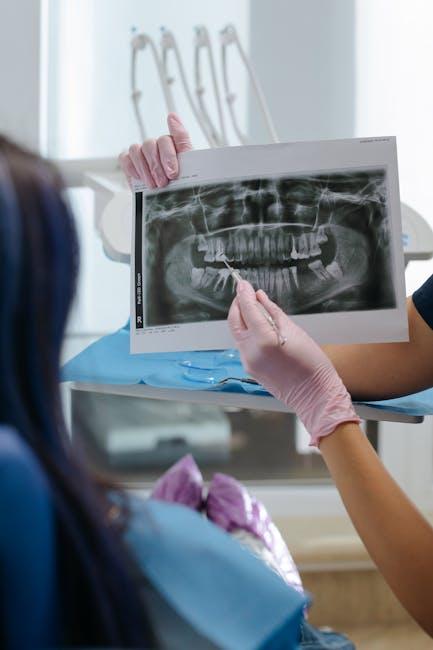
Emergency Dental Visits Take A Bite Out Of Everyone’s Wallets – Texas A&M
Unexpected dental emergencies can strike anyone at any time, often leading to sudden, unplanned expenses that can be quite shocking. In Texas, data and patient reports reveal a growing trend: emergency dental visits are putting significant financial strain on individuals and families. Texas A&M dental researchers and specialists are shedding light on the factors behind these costly visits and offering practical advice to help Texans avoid unexpected dental bills. In this comprehensive article, we’ll explore why emergency dental visits take a bite out of wallets, how to reduce risks, and what steps to take when an emergency strikes.
The Rising Cost of Emergency Dental Care
Emergency dental visits are often more expensive than routine checkups or planned dental procedures. The urgent nature of these treatments, specialized care required, and lack of dental insurance coverage for emergencies amplify the financial burden. According to recent studies from Texas A&M, the average cost of an emergency dental visit ranges from $300 to $1,200, depending on the severity of the problem.
| Type of Emergency | Average Cost (Texas) | Typical Treatment |
|---|---|---|
| Tooth Abscess | $500 – $1,000 | Drainage, Antibiotics, Possible Extraction |
| Broken or Knocked-Out Tooth | $300 – $1,200 | Repair, Root Canal, or Implant |
| Severe Toothache | $200 – $600 | Examination, Pain Management, Treatment |
| Soft Tissue Injuries | $150 – $500 | Stitching and Pain Relief |
Why Are Emergency Dental Visits So Costly?
Several factors contribute to the high costs associated with emergency dental care:
- Urgency and After-Hours Care: Emergency visits often happen outside regular office hours, leading to additional fees.
- Complex Procedures: Treating infections, trauma, or serious dental injuries requires specialized equipment and expertise.
- Lack of Dental Insurance Coverage: Many dental insurance plans have limited or no coverage for emergency treatments.
- Diagnostic Tests: X-rays, CT scans, and lab work may be necessary to diagnose the issue accurately.
Texas A&M Research Spotlight: Dental Emergencies Among Texans
Recent research by Texas A&M dentists reveals startling trends about emergency dental care in Texas:
- Around 20% of Texans report having at least one emergency dental visit in the past year.
- Tooth abscesses and infections top the list of urgent dental problems leading to costly visits.
- Low-income and uninsured populations are disproportionately affected by dental emergencies.
- Preventive care and education can reduce emergency visits by up to 40%.
Practical Tips to Avoid Emergency Dental Visits
The best way to avoid the financial crunch caused by emergency dental visits is to be proactive about oral health. Texas A&M dental experts recommend the following steps:
1. Maintain Regular Dental Checkups
Routine checkups every six months help catch potential problems early, reducing the risk of painful emergencies.
2. Practice Good Oral Hygiene
- Brush twice daily with fluoride toothpaste.
- Floss daily to remove plaque and debris between teeth.
- Use mouthwash to help kill bacteria and freshen breath.
3. Wear Protective Gear During Physical Activities
Use mouthguards while playing sports to prevent tooth fractures or knockouts.
4. Avoid Hard or Sticky Foods
They can damage teeth or dental work, leading to emergencies.
5. Address Dental Issues Promptly
Ignoring minor tooth pain or sensitivity can escalate to emergencies. Schedule appointments at the first sign of trouble.
What To Do If a Dental Emergency Happens
Despite all precautions, emergencies can still occur. Here’s some action you can take to mitigate damage and potentially lower costs:
- Stay Calm: Panic can worsen the situation.
- Call Your Dentist Immediately: Many clinics have emergency lines or after-hours contacts.
- Handle Tooth Trauma Carefully: If a tooth is knocked out, keep it moist in milk or saline solution and bring it to your dentist.
- Use Over-the-Counter Pain Relief: Ibuprofen or acetaminophen can help control pain until treatment.
- Keep Injured Area Clean: Rinse your mouth with warm water and avoid irritating the injury.
First-Hand Experience: A Texas Resident’s Story
Jessica, a 34-year-old Austin resident, shared her experience with an emergency dental visit after waking up with severe tooth pain:
“I never expected a toothache to cost me over $800 out of pocket. Without dental insurance, I was worried about how to afford the root canal I needed. Thanks to my dentist’s payment plan and tips from Texas A&M resources on dental care, I’ve improved my habits to avoid another emergency. It was a painful lesson about prevention and preparedness.”
Cost Comparison Table: Emergency vs. Preventive Care
| Type of Care | Average Cost | Frequency | Potential Benefits |
|---|---|---|---|
| Emergency Dental Visit | $300 – $1,200+ | Rare, but costly | Pain relief, urgent treatment |
| Routine Dental Checkup | $75 – $200 | Twice a year | Early detection, prevention |
| Preventive Treatments (Cleanings, Fluoride) | $50 – $150 | Twice a year or more | Reduces risk of emergencies |
Conclusion
Emergency dental visits can take a significant bite out of your wallet, especially when they strike unexpectedly. Texas A&M’s dental experts emphasize that prevention through good oral hygiene, routine dental visits, and prompt attention to minor dental issues is the most effective way to reduce emergency visits and protect your finances. By staying proactive and informed, you can minimize the chances of costly dental emergencies and enjoy better oral health. Remember, a little care today saves a lot of pain—and money—tomorrow.


